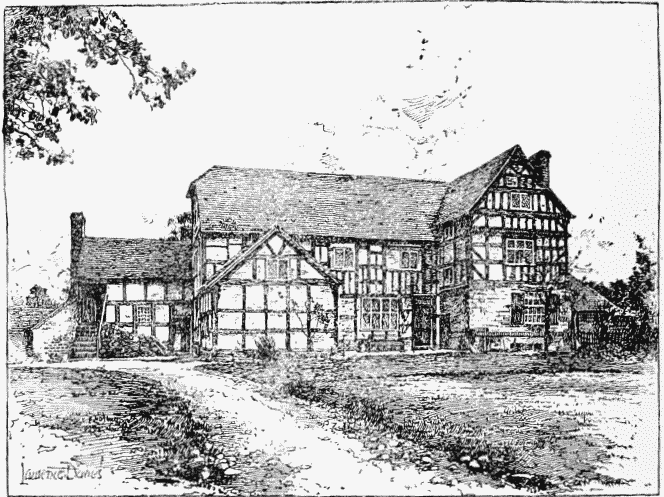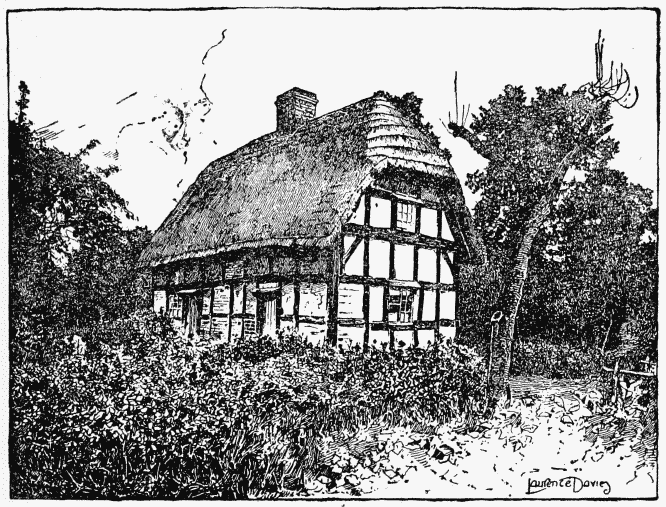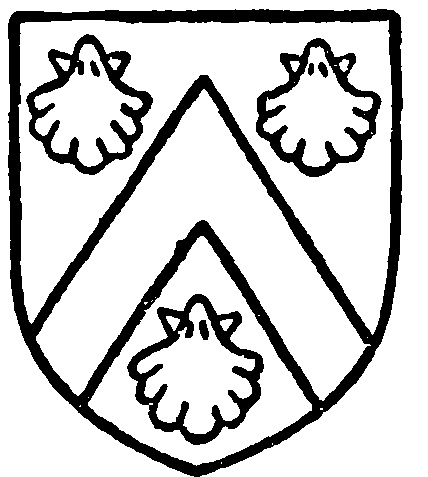A History of the County of Worcester: Volume 4. Originally published by Victoria County History, London, 1924.
This free content was digitised by double rekeying. All rights reserved.
'Parishes: Naunton Beauchamp', in A History of the County of Worcester: Volume 4, ed. William Page, J W Willis-Bund (London, 1924), British History Online https://prod.british-history.ac.uk/vch/worcs/vol4/pp143-147 [accessed 23 April 2025].
'Parishes: Naunton Beauchamp', in A History of the County of Worcester: Volume 4. Edited by William Page, J W Willis-Bund (London, 1924), British History Online, accessed April 23, 2025, https://prod.british-history.ac.uk/vch/worcs/vol4/pp143-147.
"Parishes: Naunton Beauchamp". A History of the County of Worcester: Volume 4. Ed. William Page, J W Willis-Bund (London, 1924), British History Online. Web. 23 April 2025. https://prod.british-history.ac.uk/vch/worcs/vol4/pp143-147.
In this section
NAUNTON BEAUCHAMP
Niuuantune (x cent.); Newentune (xi cent.); Newynton Beauchamp (xiv cent.).
Naunton Beauchamp lies on the right bank of the Whitsun Brook, which forms part of its southern boundary and joins the Piddle Brook flowing through the west of the parish. The land is low, the greatest height being about 100 ft. in the east and the lowest 73 ft. at Sea Ford in the extreme south. The village is 3 miles north of Pershore station on the West Midland section of the Great Western railway. It includes a number of black and white cottages. Naunton House is a red brick building with timberframed outbuildings and pigeon-house. The old rectory opposite the church is a black and white house, probably of the 17th century. Naunton Court, now a farm-house with the remains of a most, stands some distance west of the village. It dates from about 1600, and now consists of the hall block facing west with a large wing at the south end which is stone built to the first floor level and timberframed above. The hall is much altered and has a fireplace on the east and a fine old table. To the south of it is a large room, the old great chamber; at the east end is a fine semi-octagonal bay window of stone carried up two stories divided by a moulded cornice and finished with Jacobean cresting and pinnacles at the angles; it bears a carved shield with the arms of Lyttelton differenced with a crescent impaling a cross between four caltraps, for Westfaling. The window is of four lights in front and two on each return. The great chamber has three ceiling beams with vine ornament and the room over is partly panelled and has a window-seat. At the west end of this wing are two rooms, both panelled and the upper having the hearth paved with mediaeval slip tiles, probably brought from Pershore Abbey; they bear shields with the Berkeley arms, the keys of St. Peter saltirewise with the sword of St. Paul in pale, and France and England with a label.
Prattinton wrote of Naunton Beauchamp in 1812 that it was called Dirty Naunton, and that its inhabitants, though civil, seemed little accustomed to strangers. (fn. 1) The soil, chiefly clay, with a subsoil of Lower Lias, produces wheat, beans, barley and fruit.
The parish has an area of 1,030 acres, of which about one-third is arable land and two-thirds permanent grass. (fn. 2)
In 1770 an Inclosure Act was passed, (fn. 3) and the award is dated 9 January 1771. (fn. 4)
Among place-names have been found le Homme, le Brounelonds (fn. 5) (xiv cent.); Crakam Leyes, Shortcroft, le Brekewey, Penylands (fn. 6) (xvi cent.).
MANORS
King Edgar, in 972, is said to have restored to the abbey of Pershore 10 manses at NAUNTON said to have been previously granted to it by King Coenwulf at the request of the ealdorman Beornoth. (fn. 7) By the date of the Domesday Survey this 'great manor,' as Habington describes it, had passed with the manor of Pershore, by grant of King Edward the Confessor, to Westminster Abbey, and then contained 10 hides. (fn. 8) The overlordship of Westminster (fn. 9) is last recorded in 1436. (fn. 10) It was said to be held of the king in chief in 1438–9, but the service due for it was not known, (fn. 11) and in 1446 its tenure was unknown. (fn. 12)
Before the Conquest Naunton had been held by three under-tenants of the abbey, Ælfward, Saulf and Elward, freemen, who rendered services like the other freemen. (fn. 13) They had been replaced before 1086 by the sheriff Urse. From Urse the manor passed to his grandson William Beauchamp, (fn. 14) and it seems to have followed the descent of Elmley Castle (fn. 15) until nearly the end of the 14th century, (fn. 16) when Thomas Beauchamp Earl of Warwick gave it to his brother William, afterwards Lord Bergavenny, and Joan his wife, in tail-male, with remainder to the earl. (fn. 17) William died in 1411, leaving a son Richard, (fn. 18) who died without issue male before his mother, (fn. 19) by whom the manor was held until her death in 1435. (fn. 20) It then reverted to Richard Earl of Warwick, son of Thomas mentioned above. This was one of the manors settled by Richard upon his daughters in case of failure of his issue male, (fn. 21) and on the death of his son Henry Duke of Warwick without issue male in 1446 (fn. 22) it must have passed to Anne, afterwards Countess of Warwick, one of these daughters, who, on the death of her husband, Richard Nevill Earl of Warwick, the King-maker, in 1471, was dispossessed of her estates. (fn. 23) This manor seems to have passed to her daughter Isabel, wife of George Duke of Clarence, for George gave it before 1472 as the manor of 'Beechamp's Norton or Sherof's Naunton' to the chantry of Elmley Castle. (fn. 24) After George's death in 1478 the manor seems to have been claimed by his son Edward and the other representatives of the daughters of Richard Beauchamp Earl of Warwick. (fn. 25) The manor must, however, have remained with the chantry, for on its dissolution in 1545 Naunton Beauchamp Manor was granted with its other possessions to Sir Philip Hoby. (fn. 26) He, however, exchanged it with the king in 1546, (fn. 27) and in 1560 it was granted to William Garrard, (fn. 28) but the patent was afterwards cancelled and the manor given to Hugh Holinshed. (fn. 29) In June 1562 Hugh Holinshed leased a messuage and land in Naunton Beauchamp to William Cowper for 2,000 years, (fn. 30) and this was followed by other leases of parcels of the manor, (fn. 31) which in 1567 Hugh received licence to alienate to William Sheldon of Beoley. (fn. 32) After this date it descended with Beoley (q.v.) in the Sheldon family (fn. 33) until the end of the 18th or early in the 19th century, when, according to Prattinton, it was purchased of (Thomas) Sheldon by Humphrey Lyttelton. (fn. 34) Humphrey died in 1801, and was succeeded by his brother Sandys, who died in 1829. (fn. 35) In 1830 the manor was held by Richard Frances and Eliza Sandys his wife. (fn. 36) It then descended in the Frances family, and was recently purchased of Edward Vernon Frances of Natal by Mr. George Clarke, the present owner. (fn. 37)

Naunton Court, Naunton Beauchamp
The manor of SHERIFF'S NAUNTON (Shirrevesnewenton, xv cent.; Shyreves Nauntton, Shrevis Naunton, Naunton Aldebury, xvi cent.) was held of the manor of Naunton Beauchamp by knight service. (fn. 38)
Three hides and 1 virgate of Urse's 10 hides were held of him in 1086 by Herbrand, (fn. 39) who may have been the ancestor of the Guy de Naunton (Newynton) who granted a virgate of land to Maud daughter of William in 1234–5. (fn. 40) Thomas de Naunton paid half a mark to the subsidy about 1280, (fn. 41) but seems to have died before 1291. (fn. 42) In 1315 Thomas son of John, (fn. 43) also called Thomas de Naunton, (fn. 44) was holding a third of a knight's fee in Naunton of Guy Beauchamp Earl of Warwick. In 1327 Thomas de Naunton paid 3s. to the subsidy, (fn. 45) and in April 1339 he or a namesake received licence to have a chaplain to celebrate in the oratory within his house of Naunton Beauchamp. (fn. 46) There is nothing to show what was the connexion between Thomas de Naunton and Roger Aldbury of Sheriff's Naunton, who was holding a quarter of a knight's fee in Sheriff's Naunton in 1431, (fn. 47) but it seems probable that Roger had succeeded the Nauntons in their property, which was later known as Sheriffs Naunton Manor. At this date a rent of £12 out of Sheriff's Naunton Manor and lands in Elmley Castle and elsewhere was granted to Anne daughter of William Morgan and wife of John Aldbury by John Huband and John Hanbury. (fn. 48) John Aldbury was possibly the father of John Aldbury, who settled the manor on his wife Avice (who survived him) and his own heirs, and died on 4 July 1500 seised of the manor, his heir being his kinsman, Roger Norton, aged seventy-two. (fn. 49) Shortly after the manor was claimed by James son of William Aldbury, as nephew and heir of Roger Aldbury, and he stated that the title-deeds of the manor were detained by Roger and Thomas Norton. (fn. 50) He evidently failed to make good his claim, for the manor was sold by Thomas Norton before 1532 to John Lyttelton of Frankley, who died in that year, leaving it to his younger sons Edward, Gilbert, Anthony and Roger. (fn. 51) Edward apparently sold his interest to his cousin George, (fn. 52) son of Roger Lyttelton, (fn. 53) who on 1 May 1600 settled it on himself, with contingent remainder to William son of his brother Francis. He died childless at Bromsgrove on 28 May following, and the manor passed to his nephew William, (fn. 54) who on 23 May 1608 settled it on his father's youngest brother Humphrey Lyttelton of Groveley, and on Edward son and heir-apparent of Humphrey. (fn. 55) On 15 November 1618 William Lyttelton died at Bristol, (fn. 56) when he was succeeded by his uncle Humphrey, (fn. 57) who died on 31 July 1624 at Sheriff's Naunton (fn. 58) and was buried in the church of Naunton Beauchamp. (fn. 59) He was the personal friend of Habington, who wrote of him as a 'gentellman of nobell and worthy descent, with whom althoughe in hys lyfe I had discontentment, yet before hys deathe theare was between us, eaven with expressyon of teares, that true reconcilyation as I intreate all myne eaver to love hys.' (fn. 60) He was succeeded by his son Edward, who was dealing with the manor in 1629 (fn. 61) and died on 2 December 1634, (fn. 62) his heir being his year-old son Humphrey, who was holding the manor with Sandys Lyttelton and others in 1656. (fn. 63) It was possibly this Humphrey who died in 1665. The manor was probably held by Henry Lyttelton in 1686 and by Phillips Lyttelton in 1740 and 1758. (fn. 64) In 1790 Phillips and John Lyttelton sold the manor of Cowsden to Humphrey Lyttelton, (fn. 65) and Sheriff's Naunton probably passed to him at about the same time, being now merged in Naunton Beauchamp Manor.

Half-Timber Cottage, Naunton Beauchamp

Lyttelton. Argent a cheveron between three scallops sable.
A water-mill was held with the manor of Naunton Beauchamp in 1297, (fn. 66) and in 1325, when it was in a ruinous condition, being only able to grind at flood-time. (fn. 67)
CHURCH
The church of ST. BARTHOLOMEW consists of a chancel and nave without structural division (51 ft. 6 in. by 15 ft. 6 in.), south porch and west tower 10 ft. 6 in. square. The measurements are internal.
The church, with the exception of the 14thcentury tower, was pulled down and rebuilt above the plinths in 1896, but some of the old work was re-used. The chancel has a modern three-light east window, in place of a debased one of two lights existing before the rebuilding. In the north wall of the nave are two windows from the old church, both of two lights; the windows in the south wall, with the doorway and the timber porch, are all modern. In the north wall of the chancel is fixed an old moulded bracket on a head corbel. The tower is three stages high and has a pointed tower arch of two chamfered orders with moulded capitals to the responds. The 15th-century west window is of three lights with a traceried head. The second stage is lighted by square-headed windows and the bell-chamber has a pointed window of two trefoiled lights in the east, north and south walls; the window in the west wall is square-headed. The tower is ashlar-faced with diagonal buttresses, two stages high, a moulded plinth and a plain parapet.
The monuments are unimportant, but include a tablet on the north chancel wall to Francis Robinson, rector, died 1667, and a Jacobean tablet with a shield of arms on the north nave wall to Humphrey Lyttelton, who died in 1624. There are also floor-slabs to Humphrey Lyttelton, who died in 1665, to Sarah wife of Thomas Frank, 'minister,' who died in 1656, and Edward Dineley, who died in 1686.
The font has a massive octagonal bowl and a moulded base. The communion table and rails are Jacobean, the former having turned legs and the latter turned balusters and posts surmounted by balls; the pulpit of the same date is a semi-octagon with carved panels round the top. There are also an old parish chest and two old oak benches in the nave.
There are three bells: the tenor inscribed, 'Richard Serman, John Serman Churchwardens, 1675'; the second, 'John Morris, William Black C.W. 1683,' with the founder's mark I.M. (for John Martin) and three bells; the treble, dated 1674, was recast in 1897.
The plate includes a cup and paten, both of 1663 (London), and a paten given in 1906.
The registers before 1812 are as follows: (i) baptisms and burials 1696 to 1812, marriages 1696 to 1752; (ii) marriages 1755 to 1812.
ADVOWSON
The advowson followed the same descent as the manor of Naunton Beauchamp, (fn. 68) being included in the grant to Hugh Holinshed in 1562. It was not sold by him with the manor to William Sheldon, and though the presentation was made by Edward Sheldon in 1624, (fn. 69) and the advowson was included in a conveyance of the manor in 1736, (fn. 70) it seems in reality to have reverted to the Crown before 1587. (fn. 71) It was held by the Crown until 1908–9, when it passed to the Bishop of Worcester.
CHARITIES
The church lands, containing 9 a. or thereabouts, were acquired in or about 1767 under an allotment made in respect of certain lands of which the parish had been in possession from time immemorial. They are let at £5 a year, which is applied towards church expenses.
In or about 1775 Dr. Chambers, by his will, gave 26s. a year to six aged persons, to be laid out in penny loaves. The bread is distributed at Whitsuntide and Christmas.